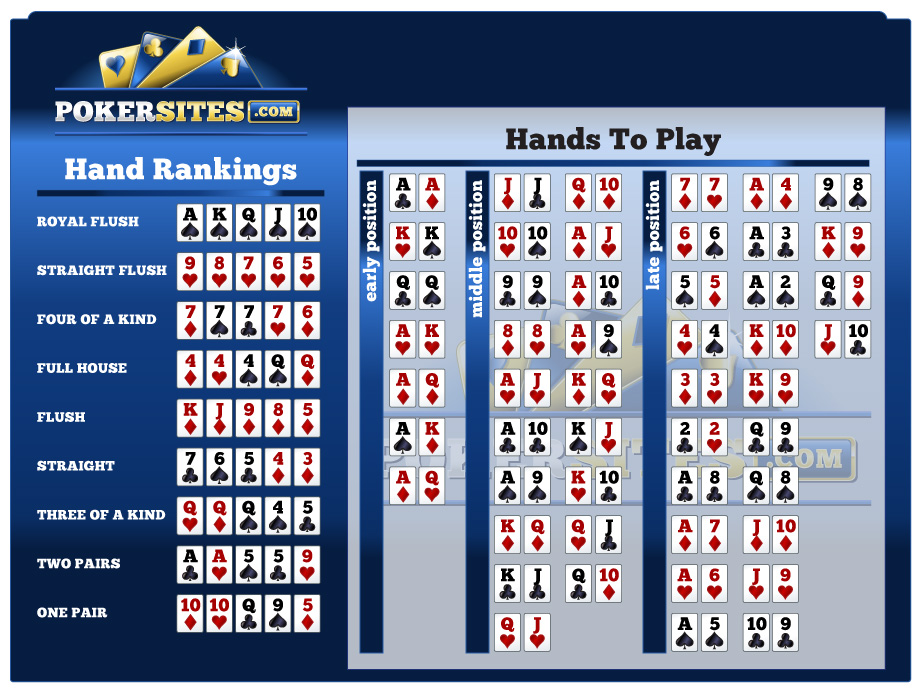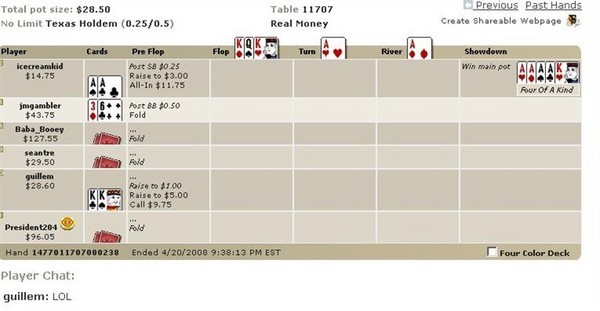Poker Odds Vs Outs
Poker Odds Trainer. Practice Pot Odds, Implied Odds and how to Play a Draw with Outs. If you already know how to calculate odds the exercises will help increase your speed and accuracy. Your Texas Hold'em poker odds are given below for hitting a draw by the river with a given number of outs after the flop and turn, and examples of draws with specified numbers of poker outs given. Example: if you hold 22 and the flop does not contain a 2, the odds of hitting a 2 on the turn is 22:1 (4%). Take 46 - outs and then divide by the outs again. (11 outs example: 46-11=35. 35/11=3.2 - so you pot odds are 3.2:1 (This is for one card. Divide this number again for 2 cards).
Pot odds, equity and expected value are important interrelated concepts in poker. As a beginner it is important that you understand the basics if you want to get ahead of your opponents.
The math side of poker is often ignored by a lot of new players but by simply spending a bit of time learning these simple concepts you will be able to improve your game drastically.

So we will first go through each of them individually and then a full example to tie it all together in the next few articles.
Table Of Contents
Pot Odds: The Definition
The odds which are being offered to you when your opponent bets are called pots odds. Essentially it is how much you will win vs how much you have to risk – your risk to reward ratio.

This is particularly useful when in a situation where you're facing a bet with a drawing hand (such as a flush draw). Pot odds will tell you whether is it correct for you to call or fold based on what size our opponent bet and how many cards that will improve our hand.

We can also use pot odds to determine whether or not we can call a river bet based on how often we expect our opponent to be bluffing.
Pot Odds: Using Ratios
To take an example of when we are facing a bet on the river when we have A9 of diamonds:
On the river our opponent bets $26 into a $41.5. If we called would be risking $26 and our reward is $41.5 already in the pot plus our opponents bet of $26.
This means that we are getting odds of 67.5: 26 (67.5 = 41.5+26). This is approximately 2.6:1.
Pot Odds: The Percentage Method
We can also convert that into a percentage (percentages are typically more intuitive) the result is 28%.
So if we expect to win 28% of the time or more we can call profitably.
How did we get that number?
Take the amount we have to call ($26) and divide it by the amount we have to call plus how much is in the pot:
Pot odds percentage = 26/(26+67.5) = 27.8%
Here is a summary of the numbers of outs and the pot odds associated for number of outs:
Why Are Pot Odds Useful?
It first lets us determine our risk to reward ratio. We can then use this along with the strength of our and our opponents potential hands in order to make better decisions.
If we have a very weak hand we should not be willing to call very large bets, only smaller bet sizes; in other words we must have very good pot odds in order to call.
This makes sense – if someone was to bet $1 into a $100 pot on the river we will continue with almost all of our range.
The greater the pot odds (the smaller our opponent bets) the more likely we should be to continue with our hand. Conversely, the smaller the pot odds (the larger our opponent bets) the less likely we should be to continue with our hands. The larger our opponent bets the more the requirement for an extremely strong hand.
Implied Pot Odds
Implied odds is simply the additional chips we expect to win when we hit our hand.
For example if we were to hit a flush on the turn or river, the hand won't just end – we still have an opportunity to win more money from our opponent.
This will reduce the pot odds we need to call profitably. The exception to this is when our opponent has pushed all in – we call we cannot win any more chips.
The reason we call preflop with small unpaired hands is not because we expect to have the best hand all that often; but because we expect to win a large pot when we hit a big hand such as three of a kind.
The reason we call is because with a hand like three of a kind, we have large implied odds and if we hit our hand we expect to win a big pot.
Here is an explainer video of implied odds from GreenBeanVideos:
A Real World Example of Implied odds:
The reason you go to College or University and get a degree is not because of the return you would expect immediately after graduation. It is because of the additional value a degree would bring you in the years after gradation through income, job opportunities etc. The same applied to poker.
Poker Odds And Outs
Unfortunately implied odds cannot be directly calculated like pot odds – we have to guesstimate the amount our opponent will be willing to pay us off after we make our hand.
If we think our opponent has a very strong hand, and we stand to make a better one, we will have large implied odds.
If our opponent has a weak hand, we will have little implied odds.
Additionally, if we believe our opponent is a very bad player we will usually have large implied odds as he will be more likely to make mistakes and pay us with hands that he shouldn't have.
Finally, if he is a good player we will have significantly less implied odds.
Here is a quick recap on everything we covered on pot odds:
Pot Odds Calculator
You do not need a fancy piece of software to work out your pot odds. As we have seen, it is simply the ratio of the bet you have to call to the size of the pot (including your opponents bet). You can also use a calculator to calculate the the percentage odds (or roughly do it in your head, you don't need to be extremely accurate)
However, on of the best pieces of software you can use in conjunction with calculating pot odds from cardschat.com.
This piece of software can be used to work out your pot equity which we have discussed in detail in other lessons.
Conclusions
You should now be able to work out pot odds and when coupled with our other lessons, you should have a basic grasp on the math of poker.
Follow up this lesson first with Pot Equity and Expected Value (EV)
Once the flop has been dealt in Texas Hold'em, you'll be able to count your outs and know how likely it is your hand will improve. That will tell you whether you should stay in the hand or fold.
You can figure out your outs and odds for any hand, but here is a quick and dirty list of the most common scenarios:
Texas Hold'em Cheat SheetOdds Based on Outs after the Flop
If after the flop, you have:
Two outs: Your odds are 11 to 1 (about 8.5 percent)
A common scenario would be when you have a pair and you are hoping your pair becomes a three-of-a-kind (a set).
Four outs: Your odds are 5 to 1 (about 16.5 percent)
A common scenario would be when you are trying to hit an inside straight draw (there are 4 cards of one number that will complete the straight) or you have two pairs and you hope to make a full house (there are three cards remaining of one number and two of the other).
Eight outs: Your odds are 2 to 1 (about 31 percent)
A common scenario would be that you have an open-ended straight draw. There are four remaining cards of two different numbers that will complete your straight, on the high end and on the low end.
Nine outs: Your odds are 2 to 1 (about 35 percent)
This is the common scenario when you have a flush draw. Any of the nine remaining cards of the suit will give you a flush.
Poker Odds And Outs For Dummies
Fifteen outs: Your odds are 1 to 1 (about 54 percent)
A scenario for this is having a straight and flush draw, where either any of the nine remaining cards of the suit will give you a flush, while there are four cards remaining of each of two numbers that would complete a straight. However, you don't count the same cards twice as outs, so those of suit you hope to get don't count again.
The Rule of Four and Two
Poker Odds Vs Outside
These odds only apply to counting both the turn and the river, so they assume you will stay in the hand until the showdown. Your odds are only about half as good for a single card draw, such taking the hit on the turn or taking the hit on the river. A common way of looking at the difference in the odds when you will be seeing two cards compared with one is called the Rule of 4 and 2.
After the flop, count your outs and multiply them by four to get your percentage odds. This doesn't give you an exact number, but it is quickly in the ballpark. With 15 outs, 4 x 15 = 55 percent you'll complete that straight or flush with the next two draws.
However, when you are calculating the odds that a single draw will improve your hand, you multiply the outs by two rather than 4. With 15 outs, 2 x 15 = 30 percent chance.